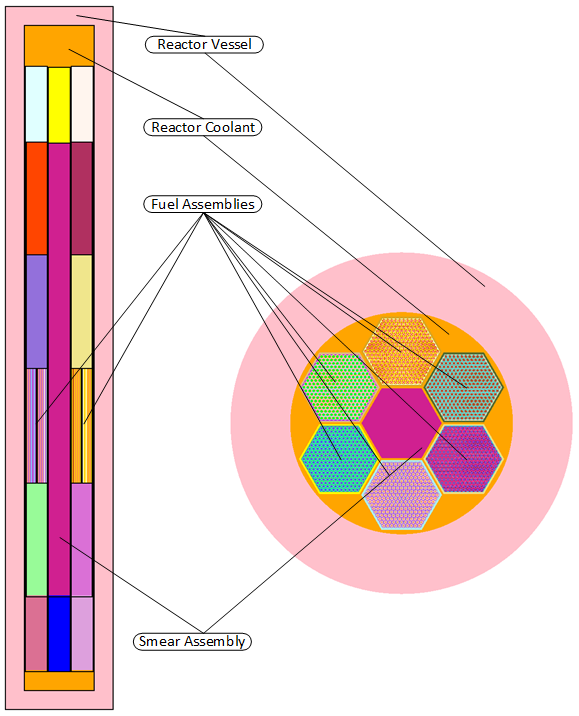Welcome to FRIDGe
This repository is for the Fast Reactor Input Deck Generator (FRIDGe)
Core
A core is built by placing any number of assemblies into any position within the core.
It is created using a YAML file, which can be found in fridge/data/core and requires four variables in addition to n number of assembly positions.
Table 1 shows the requirements for a core file.
Table 1. Variables for Core YAML file.
| Variable Name | Variable Type | Unit | Example |
|---|---|---|---|
| Name | string | – | TestCore |
| Vessel Thickness | float | cm | 10.0 |
| Vessel Material | string | – | HT9 |
| Coolant Material | string | – | LiquidNa |
| Assembly Positions† | dictionary | str: str | 01A01: TestAssembly |
† A core will typically have multiple assemblies.
Name is a string used to denote the name of the core.
Vessel Thickness is a float do denote the thickness of the vessel both axially and radially.
Vessel Material is a string used to create a material for the reactor vessel.
Coolant Material is a string used to create the coolant for the reactor vessel.
Note: This will override any coolant material assigned to an assembly.
Assembly Position is used to describe each assembly in the core, and what assembly goes there.
Note: While the user can create as many assemblies as they wish in a core, MCNP only allows 9999 cells in a single model, which will limit the number of assemblies.
The first entry is a five character string which broken into a triplet. The first two number denote the ring, the letter denotes the hextant, and the last two numbers denote the number of assemblies off the hextant axis. For example, 05A03 is in ring 5, hextant A, and 3 assemblies off the axis. Figure 1 shows the nomenclature used to describe each position. Figure 2 shows an plan and elevated view of a core with two rings, where the center assembly is a smear and the outer assemblies are all fuel.
Figure 1. Description of assembly positions.
Figure 2. Simplified FRIDGe core.
